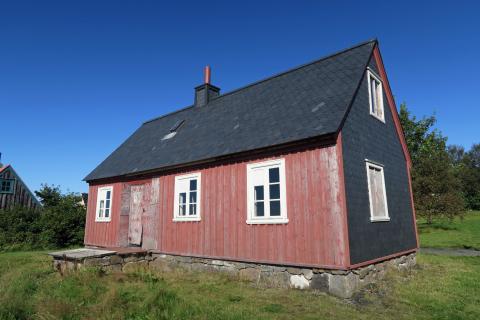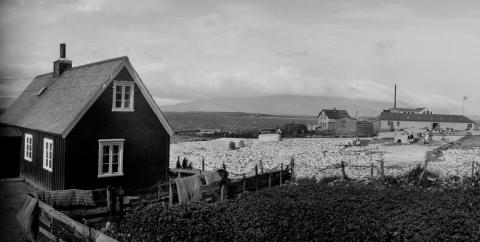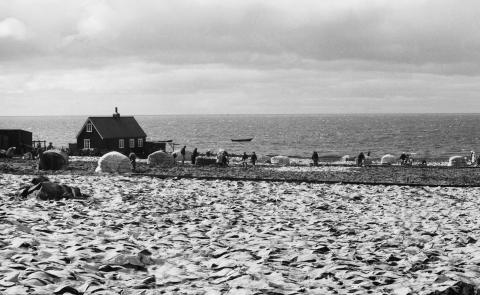
The Ívarssel house, which once stood on Vesturgata 66b, was built by and named after Ívar Jónatansson, a fisherman/farmer, in 1869. Ívarssel is one of the so-called "Selsbær" houses built to house labourers in the 19th century. The house was transported to the Árbær Open Air Museum in 2005.


Ívarssel, which once stood at Vesturgata 66b, was moved to Árbær Open Air Museum in 2005.
Fisherman Ívar Jónatansson built the house. He received a building permit in December 1869 and most likely completed its construction in 1870. Ívarssel was one of the so-called Selsbær, which were workingmen's cottages built in the land of Sel in the 19th century. At the turn of the 20th century, there were five Selsbær. The value of Ívarssel was assessed in 1874, and according to records, there were four rooms in the house and a kitchen. The easternmost room of the house was used for storage and, at first, as a hayloft. The house was painted red with white windows, which were initially six-paned. Ívarssel was considered a large house in its day, as all the other buildings in the vicinity were low-rise turf farms.
Ívar was the captain of a boat that sailed from Litluselsvör. He was considered a wealthy man and got the nickname Ívar the Rich. Ívar and his wife Ólöf had domestic servants in Ívarssel. Ívar died in 1899 at the age of 67, and his widow, Ólöf Bjarnadóttir, sold the property in 1903 to Ditlev Thomsen, along with the associated land. The following year, Helga (1877-1957), the daughter of Ívar and Ólöf, and her husband Einar Sigurðsson, a fisherman and labourer (b. 1877), bought the property. Their descendants lived the longest in the house. They had eight children (b. 1901-1920). Ólöf Einarsdóttir (b. 1907), the granddaughter of Ívar and Ólöf, described life around the house from the time her mother was growing up in an interview. She recalled that there was once a large vegetable garden by the house (where Selbrekkur later stood) and a plot below the house for drying fish until 1940. The vast fish drying lot of the shipping company Alliance was sited to the east of the house.
Einar turned the house's hayloft into a living room when his mother-in-law's cows were sold (around 1916). The windows were changed as soon as the barn was turned into a living room, but it is not clear to what extent. Parts of the house were often rented out, and at its peak, three families lived there.
According to Ólöf Einarsdóttir's memoirs, around 1920, there were three rooms on the ground floor of the house and a kitchen. At the north or west end of the building was a living room that was often rented out (called Norðurstofa, west chamber or stateroom). Linked by a corridor and kitchen, there was a dining room at the east end (where there was a barn before) and the family's bedroom. In the 1920s, the kitchen was enlarged by removing one of the living rooms, and a pantry was added. There were two rooms in the attic and the southern room, which was larger, was rented out, usually to families, until Ólöf Bjarnadóttir, Ívar's widow, moved there when Einar and Helga bought the house. Water was fetched from the nearest house on Vesturgata, and oil lamps were used until about 1920. The house got indoor plumbing around 1920.
Ívarssel's environment changed a lot after 1920. Previously, a small path went past the house, an extension of Vesturgata, that turned northwest at Litlasel and reached down to the sea. A stone wall stood along the route. In 1920-1921, two small apartment buildings were built by Alliance on plots of land just west of Ívarssel, and the vegetable gardens of Ívarssel and other houses were appropriated. These houses, Selbrekkur, were residential houses for the company's employees. They were demolished in the early 1990s.
After 1940, two industrial companies constructed large buildings for their operations to the north and east of Ívarssel. In 1941, Stálsmiðjan built a factory building right up to Ívarssel on the northeast side. The house was moved to Árbær Open Air Museum in 2005.

